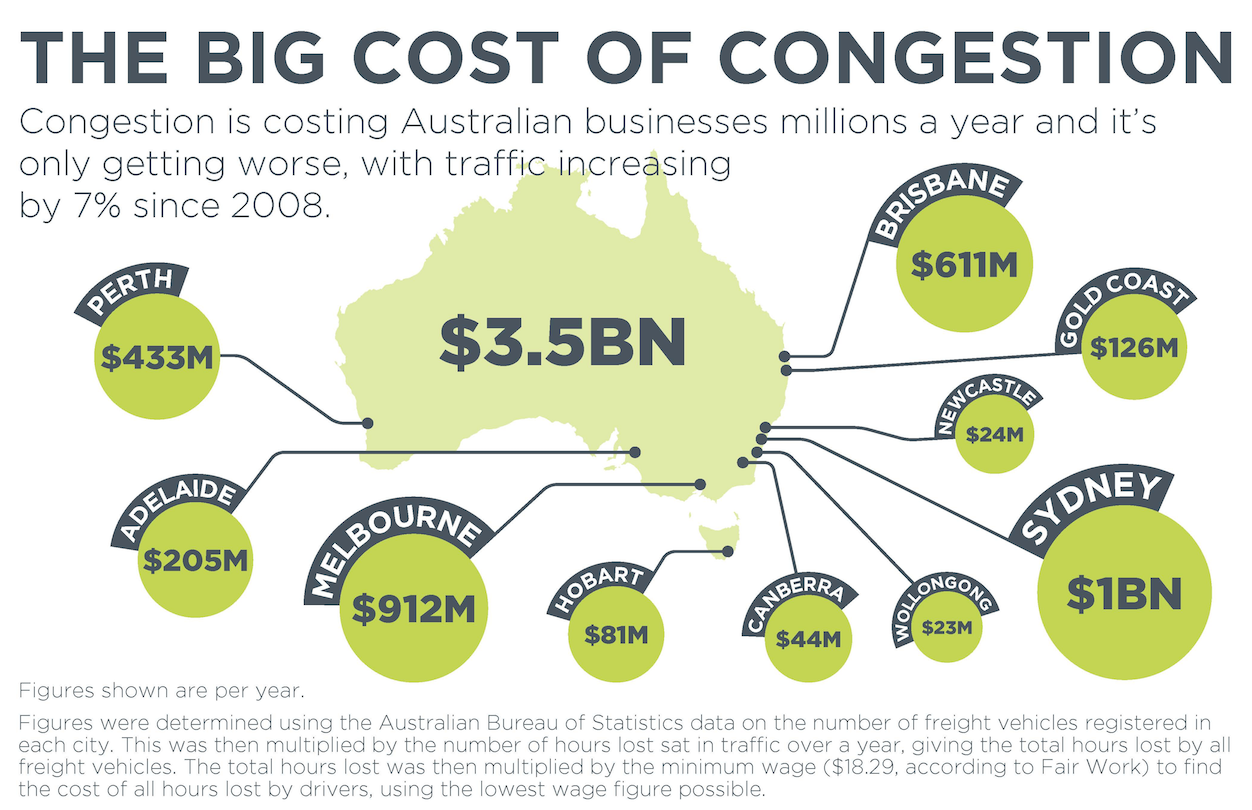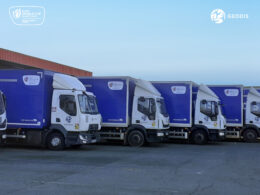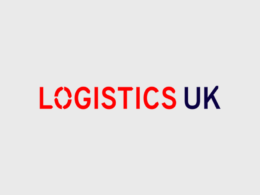Congestion remains one of the biggest challenges facing Aussie businesses on the road and is having a significant impact on the cost of maintaining a fleet. Congestion means there is a greater chance drivers will become stuck, wasting billable time, burning fuel, missing targets and potentially disappointing customers.
In fact, according to TomTom Telematics latest Cost of Congestion report, getting stuck in traffic is costing Aussie businesses $3.5b a year in lost labour costs alone.
The report, which is based on the TomTom Traffic Index, found congestion is up 3% from last year, increasing costs by $470m, and showing no sign of stopping. Drivers are spending approximately 27 minutes more time on the road per day across Australia’s major cities.
This is costing businesses an average of $8.20 per vehicle per day, which is a 14% increase from 2016. That’s a huge cost to business. For example, if you had 100 vehicles in your fleet on the road, congestion would cost the business $820 per day. For a year, it would equate to more than $205,000 in lost productivity.
Not only is this a financial burden, but can also affect service level agreements and the customer experience, with late arrivals or missed appointments being caused by congestion. It also has a negative impact on the health and safety of drivers, who end up being put under increasing time pressures thanks to unplanned congestion. More than ever, businesses need to find ways to reduce the impact of congestion and improve efficiency of their fleets.
Why is congestion getting worse?
Despite the government’s efforts to build more roads and infrastructure to ease congestion, our urban population is booming and infrastructure simply cannot keep up. According to the Australian Bureau of Statistics, the national vehicle fleet grew by 2.1 per cent between 2016 and 2017, with commercial vehicles growing by 3 per cent or nearly 100,000 vehicles.
The increase in on-demand services, such as Uber and Deliveroo, as well as online shopping, such as Amazon, are only going to make congestion worse, by increasing the number of vehicles making short trips in our cities to deliver products or services. This will add to the already large number of tradies, vets, sales teams, etc. already on the road making appointments in our cities.
Avoiding congestion as a business
Simply put, businesses can avoid congestion and achieve cost savings through smarter navigation and more efficient fleet management.
Today, telematics solutions for businesses provide improved data analytics, using real-time traffic information in combination with historical traffic data. Automatic routes are planned to avoid peak hours, ensure drivers are not travelling through congestion hotspots or inappropriate times of the day, and use alternative routes to avoid piling up on the same roads as general motorists. This has been proven to cut average journey times by up to 15 per cent.
Making sure drivers are taking the quickest route and avoiding congestion is the first step to reducing costs on the road. But, when allied with the depth of information provided by effective Vehicle Tracking the effect can be magnified.
By having full transparency of ETAs, live from the road, businesses can send the best person for the job. Not the driver who is nearest to the customer, but the one who can arrive faster, based on historic travel times and live traffic information.
Even if routes have been pre-determined in the morning, smart telematics solutions will offer the ability to adjust and dispatch jobs on the fly, creating a more dynamic fleet and helps to avoid any incidents that may have occurred during the day.
More than ever, it is imperative businesses start taking advantage of these solutions to reduce the cost and impact of congestion for themselves, and to help relieve overall congestion for motorists.
Greater visibility and control over your mobile assets can help to: slash operating costs, boost employee productivity, develop lasting relationships with customers and, most importantly, avoid the high cost of congestion. Regardless of the size or nature of your vehicle fleet, it’s clear there are a variety of benefits available through the effective use of fleet management solutions.













